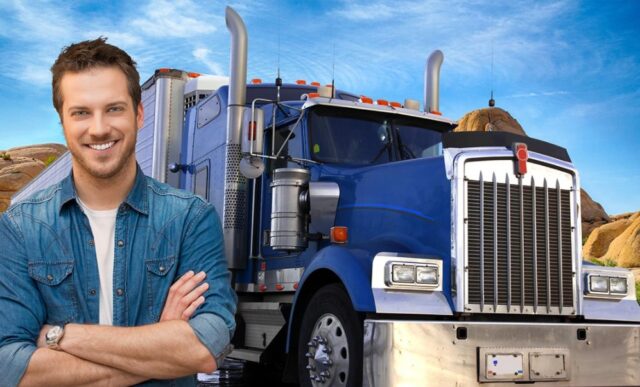
There are two main categories of professional truck drivers out there: company drivers and owner-operators. The job responsibilities of a company truck driver revolve around transporting cargo for a trucking company. An owner-operator truck driver, on the other hand, is an independent contractor who hires out and drives their own semi-trailer truck.
Countless owner-operators are driving in the United States at present, moving freight across the country day after day. Taking into consideration the growth of the trucking industry, you should think of starting your own business. Follow these steps to get started.
Evaluate your situation

Becoming an owner-operator truck driver is a big decision. Before logic kicks in, you’ll experience some kind of emotion. It’s not a good idea to decide with your emotions when you’re offered the chance to build a meaningful career. Figure out what really matters to you and why.
Driving a truck is a good career option, generally speaking. But it’s useful to keep in mind that you’ll spend weeks on the road, away from family and friends. Experience matters too. You need at least two years of experience in over-the-road trucking (driving for someone else) to work on a professional level. Be sure that you’re ready to take the plunge.
Get your commercial driver’s license
If you don’t already have one, don’t waste any more time and get a CDL. With it, you can operate large, heavy, or placarded hazardous material vehicles in commerce. This license isn’t difficult to obtain, but the process involves time and effort.
After having passed the physical exam, you need to take a knowledge test. As if this wasn’t enough, you have to take a CDL skills test to get fully licensed. If you hold a CDL and run a trucking company, you hold trucking authority and transport the cargo with your own license.
Even if you have a commercial driver’s license, don’t get too comfortable. Make sure you have the correct class of CDL for the planned cargo.
Decide on lease vs purchase

Decide if you’re going to lease your own vehicle to a company or operate under your own authority. If you’re contemplating the idea of leasing a truck from a company, look into the possibility of a lease-to-own truck purchasing option.
At the end of the lease period, you can either return the vehicle or purchase it for the price and sales terms included in the original lease-purchase agreement. Needless to say, if you lease from a trucking company, you have to haul for them.
Operating under your own authority will allow you to make more money. You have approval to make a profit by hauling freight as your own trucking company.
Apply for a USDOT and MC number
First things first, obtain authority to operate. To become an owner-operator truck driver, you must apply for a USDOT number, which serves as a unique identifier when collecting and overseeing a company’s safety information.
If you transport federally regulated commodities across state lines, you need an MC number as well. You can apply for the USDOT and MC numbers via the FMCSA website. The type of authority you’ll need depends entirely on the specifics of your business.
It’s recommended to check directly with the source, like the motor carrier authority, and request additional information. Another good source of information can be your insurance company.
Purchase truck insurance

Federal law requires all truck drivers to carry insurance so their interests and those of other motorists are protected in the event of an accident. If you’re under a lease agreement with a motor carrier, you’ll need bobtail truck insurance to cover the gaps in the insurance provided by your motor carrier.
The experts at Insuranks.com point out that bobtail liability insurance may already be included in the lease agreement, so make sure to request a copy. You can purchase other types of insurance to protect your company. There are several unique scenarios and the insurance requirements are different than if you’re operating under a permanent lease. So, understand what policies are needed.
Find loads to haul
Finally yet importantly, it’s your responsibility to find truck loads from shippers. It can turn out to be a time-consuming job, but you can master this skill very quickly. Search on the Internet on load boards to find the information you’re interested in. Better yet, reach out to a third-party dispatch and logistics provider.
They might have something for you. Ideally, you should negotiate the contract directly with the shipper. But this involves some cold calling. At any rate, introduce yourself and find out whether a private contract is available. Rate negotiations can be frustrating. You’re a professional, so you can do the job right. Don’t accept a loss you can’t afford.
Reduce costs, if possible

As an owner-operator, you can reduce expenses without affecting your budget. For example, if you keep the equipment functioning properly, you won’t have to bother your head about repair costs. Unexpected vehicle breakdowns can be costly, to say the least.
Minimize expenses by keeping on top of preventative maintenance and using vehicle diagnostic data to plan repairs. Equally, you can enhance fuel efficiency by driving close to the speed limit and maintaining a constant speed.
Accelerating more than braking is a complete waste of energy. Internal combustion engines are less efficient when accelerating as opposed to running at an optimized RPM (revolutions per minute).
Be more patient
Becoming a successful owner-operator truck driver requires determination, not to mention time and hard work. There’s one more thing, though. You’ll need lots and lots of patience. You can make it big, but not without proper planning and smart decision-making.
The point is that you shouldn’t rush into doing anything. Take notes, read industry publications, talk to other professionals, and learn about the business as much as you can.
Be patient because the process can turn out to be a long one. Take breaks when you need to and look after your health. Try to eat healthily and do exercise.













